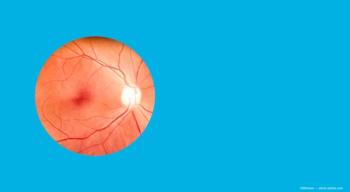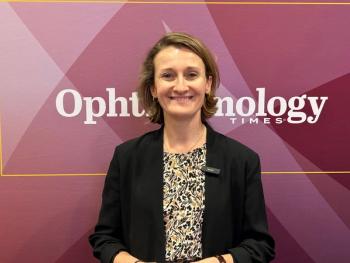
- Ophthalmology Times: September 1, 2021
- Volume 46
- Issue 14
Evolution of optical coherence tomography of the human eye
Adolf Fercher's 2D image of fundus paved way for today’s imaging technique.
Special to Ophthalmology Times®
It is essential for diagnosing blinding diseases such as macular degeneration, glaucoma, and diabetic retinopathy at early, treatable stages before irreversible loss of vision occurs.1-3
In a similar way to ultrasound, OCT measures the “time of flight” distribution of light that is reflected from tissue and is based on low-coherence interferometry, typically using near-infrared light because the relatively long wavelength allows it to penetrate the scattering medium.
Related:
The first 2-dimensional picture of the fundus of a human eye in vivo was created by the late Adolf Friedrich Fercher in 1990 using white light interferometry. He presented his results at the International Commission for Optics Congress that year.4,5
Fercher’s visionary ideas laid the basis for the development of OCT, and the first in vitro OCT images were published by German and United States researchers in 1991.6,8-10
Fercher’s background
After graduating with a degree in physics in 1968, Fercher worked at Carl Zeiss, Germany, on optical testing, computer holography, and holographic interferometry.
In 1975, he became a professor at the University of Essen, Germany; from 1986 he was professor of medical physics, and later chair of the Department of Medical Physics, at the Medical School of the University of Vienna. He retired in 2008.1
Fercher published his first paper on the biomedical applications of optics while he was still working for Carl Zeiss,7 applying Mie theory to calculate light scattering in a simplified model cell.
Related:
He showed that the scattered signal oscillates as a function of scattering angle and that the oscillation length is related to particle diameter.
It was during his time at the University of Vienna that Fercher and his colleagues worked on low-, partial coherence, and white light interferometry for in vivo imaging of biological tissue. Their focus was on the eye.
Although the image quality of Fercher’s 2D interferometric depth scans of the fundus was poor compared with modern standards, the retinal thickness, the excavation of the optic disc, and the lamina cribrosa were visible.8
Next, David Huang, MD, PhD, and colleagues from a group led by James Fujimoto, PhD, at Massachusetts Institute of Technology, were the first to synthesize optical A-scans to 2D images (B-scans), demonstrating the potential of this technology to record cross-sectional images of translucent and scattering tissue.1
Related:
Huang named this new diagnostic technique "optical coherence tomography"11 The first commercially available OCT device went on to be launched by Humphrey Instruments in 1996.12
The technology has contributed to an understanding of disease mechanisms and treatments, including “in vivo histology” and intraoperative monitoring in disciplines including ophthalmology, cardiology, and cancer.
About the authors
Sibylle Scholtz, PhD; Lee MacMorris; and Achim Langenbucher, PhD
e:
Scholtz, MacMorris, and Langenbucher are based at the Institute of Experimental Ophthalmology, Saarland University. They have no financial disclosures.
--
References
1. Hitzenberger CK. Adolf Friedrich Fercher: a pioneer of biomedical optics. J Biomed Opt. 2017;22(12):1-8. doi:10.1117/1.JBO.22.12.121704
2. Scholtz S, Langenbucher A. 20 jahre optische biometrie. Der Augenspiegel. May 2019:28-29.
3. Inventors of optical coherence tomography win 2017 Fritz J. and Dolores H. Russ Prize. News release. National Academy of Engineering. January 4, 2017.
4. Fercher AF. Ophthalmic interferometry. In: Von Bally G, Khanna S, eds. Proceedings of the International Conference on Optics in Life Sciences. Garmisch-Partenkirchen, Germany, 12-16 August 1990, Elsevier, 1993.
5. Fercher AF, Hitzenberger CK, Drexler W, Kamp G, Sattmann H. In vivo optical coherence tomography. Am J Ophthalmol. 1993;116(1):113-114. doi:10.1016/s0002-9394(14)71762-3
6. MedUni Wien trauert um Adolf Fercher. News release. Medizinische Universitat Wien. March 13, 2017.
7. Fercher FA. Computation of diffraction patterns for biological cell models based on Mie theory. Optik (Stuttg). 1975;43:129-148
8. Fercher AF, Roth E. Ophthalmic laser interferometry. Proc SPIE Optical Instrumentation for Biomedical Laser Applications. 1986;658:48-51, doi:10.1117/12.938523.
9. Fercher AF, Mengedoht K, Werner W. Eye-length measurement by interferometry with partially coherent light. Opt Lett. 1988;13:186-188.
10. Fercher AF. Optical coherence tomography – development, principles, applications. Z Med Phys. 2010;20:251-276, doi:10.1016/j.zemedi.2009.11.002.
11. Huang D, Swanson EA, Lin CP, et al. Optical coherence tomography. Science. 1991;254(5035):1178-1181. doi:10.1126/science.1957169
12. Hüttman G. Optical coherence tomography: 1. History.
Articles in this issue
about 4 years ago
Specialists offer pearls for physicians’ financial healthover 4 years ago
Expert insights: Flares of dry eye diseaseover 4 years ago
Home monitoring patients for AMD: Targeting CNVover 4 years ago
Study targets utility of epithelial thickness mappingover 4 years ago
Outdated magazinesover 4 years ago
Patient glaucoma management focuses on pivotal studiesover 4 years ago
Throwing everything away ... except the patient and the surgeonNewsletter
Don’t miss out—get Ophthalmology Times updates on the latest clinical advancements and expert interviews, straight to your inbox.













































